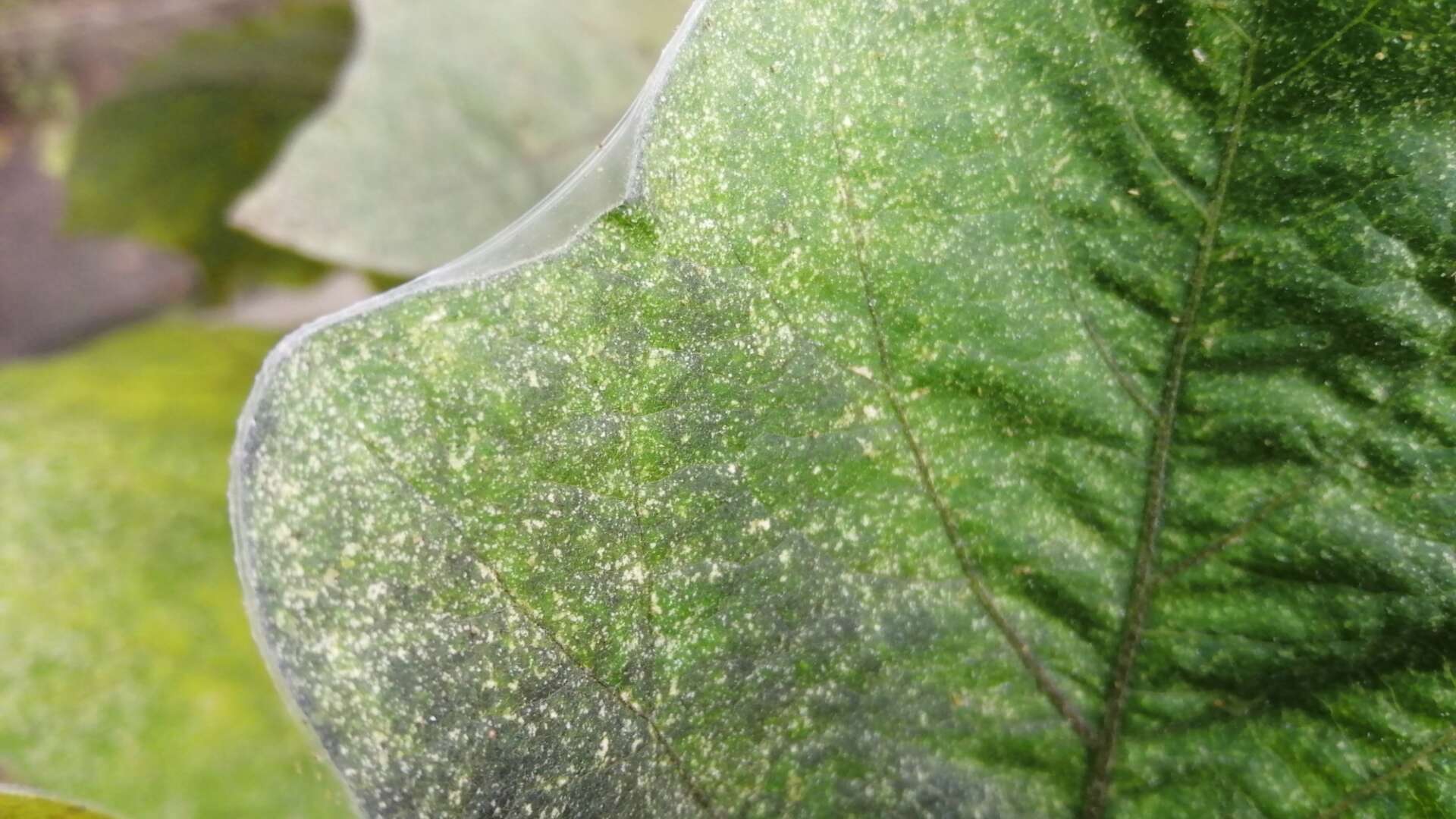How to tackle red spider mites organically

Despite being only 1mm long, red spider mites can rapidly cause damage to a wide range of plants in the greenhouse including aubergines and cucumbers.
These tiny plant-feeding mites (Tetranychus urticae) puncture the leaves to feed on the sap, causing tissue damage. Despite their name, they’re not spiders and only red coloured when they are inactive during the winter.
The mite affects a wide range of plants with aubergines and cucurbits being particularly susceptible, but it’s also partial to tomatoes and peppers. You’ll probably notice small puncture wounds at first on the underside of the leaves, which appear as unsightly fine yellow or brown dots- but this problem can rapidly escalate.
As the problem progresses, larger sections of the leaves turn a pale mottled brown, and eventually curl up and die. You will also notice a fine webbing on the leaves, containing large numbers of the mites.
How to avoid Red Spider Mites
The mite overwinters in the crevices and cracks in your greenhouse, so it pays to have a good clear up during the winter. Remove any plant debris and clean up materials where they might lurk such as pots and canes using biodegradable soaps and citrus based disinfectants for tools.
During spring and summer, the mite thrives under dry conditions, so raising the humidity in the glasshouse will help to keep it under check. This can be achieved through misting or “damping down” – keeping the floor of the glasshouse moist during sunny weather. But be careful, as too much humidity can, of course increase the chances of diseases such as mildews and blight.
How to treat Red Spider Mites
If only one or two leaves are affected, it pays to remove them promptly. Low-level local infestations could also be controlled using a horticultural plant oil-based spray, but it must be sprayed directly onto the pests to work.
If the problem persists, then there are biological controls which are very effective. The most common control is a predatory mite Phytoseiulus persimilis. It’s safe to release into the glasshouse as it only attacks the red spider mite. These are supplied in a shaker that are distributed around the glasshouse. You should wait until there are visible signs of red spider mite and the glasshouse temperature is 15C or above. These biological controls are so effective, they have been adapted widely by commercial glasshouse growers who have found them cheaper, safer and more effective than using synthetic chemicals.